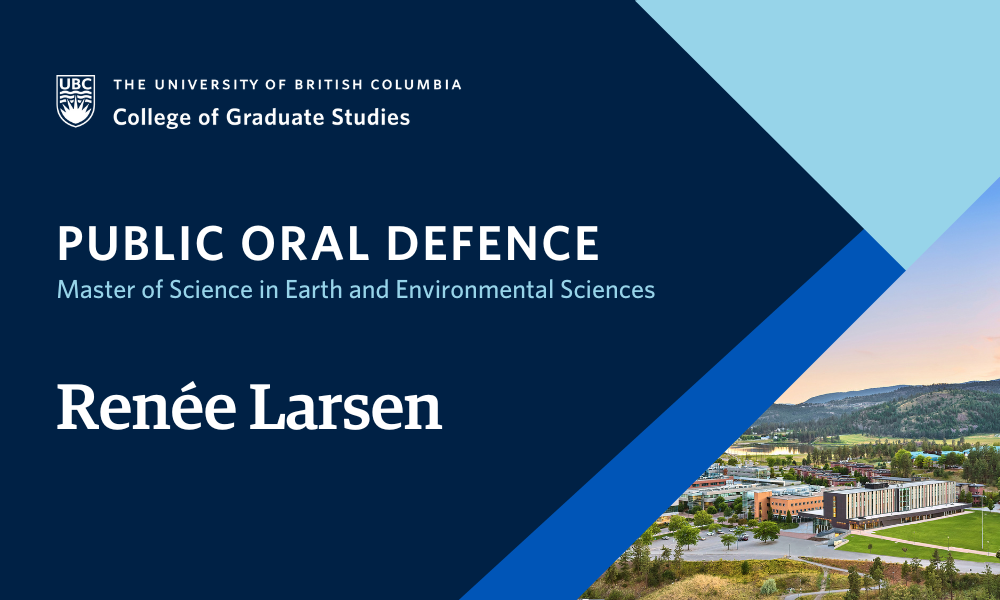
- This event has passed.
RESCHEDULED Thesis Defence: Wildfire mitigation scenarios for the Thompson-Okanagan region of British Columbia: Assessing social-ecological trade-offs
October 18, 2024 at 1:00 pm - 5:00 pm

Renée Larsen, supervised by Dr. Mathieu Bourbonnais, will defend their thesis titled “Wildfire mitigation scenarios for the Thompson-Okanagan region of British Columbia: Assessing social-ecological trade-offs” in partial fulfillment of the requirements for the degree of Master of Science in Earth and Environmental Sciences.
An abstract for Renée Larsen’s thesis is included below.
Defences are open to all members of the campus community as well as the general public. Please email mathieu.bourbonnais@ubc.ca to receive the Zoom link for this defence.
ABSTRACT
With unprecedented wildfire seasons in British Columbia during the past five years, the importance of accommodating fire in landscape management strategies has recently been recognized. Wildfire management strategies, such as prescribed burns and mechanical thinning, often do not consider the complex feedbacks and interactions among the numerous social and ecological components of wildfire-prone landscapes and the potential impacts of landscape alterations. As such, there is growing impetus to develop wildfire management strategies that balance ecological processes with social objectives. We examined how different scales of wildfire mitigation will impact social and ecological values in the Thompson-Okanagan region of British Columbia. Collaborating with local experts including Indigenous governments, municipal and regional governments, industry, and environmental organizations, we identified and mapped a range of important social (e.g., cultural, recreation, and infrastructure) and ecological (e.g., wildlife habitat, species at risk, and biodiversity) values on within the Okanagan. We simulated wildfire management scenarios using Burn-P3, by incrementally increasing the proportion of mitigation applied from 0-100% in both the wildland-urban interface (WUI) and entirety of the study area. The resulting outputs of Burn-P3 (burn probability and fuel consumption) were integrated into two novel spatial models that estimated wildfire severity and impacts to social and ecological values on the landscape. Wildfire mitigation at a landscape level that treated 20 to 50% of the landscape and restored a mosaic of heterogenous fuel compositions had the lowest burn probability and the least social and ecological trade-offs. While there is considerable spatial variation in the impacts to the examined social and ecological values, the application of mitigation in areas extending beyond the WUI resulted in a shift to a low to mid-severity wildfire regime, which, if allowed to burn, may encourage higher wildfire resilience on the landscape. This study provided insight into the wildfire social-ecological system in the Okanagan, and enhanced our understanding of what scales wildfire mitigation will be effective in similar landscapes and if humans and ecosystems can adapt to larger-scale implementation of mitigation.